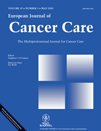The efficacy of oral ondansetron and dexamethasone for the prevention of acute chemotherapy-induced nausea and vomiting associated with moderately emetogenic chemotherapy – a retrospective audit
Abstract
NG W.L. & DELLA-FIORENTINA S.A. (2010) European Journal of Cancer Care19, 403–407The efficacy of oral ondansetron and dexamethasone for the prevention of acute chemotherapy-induced nausea and vomiting associated with moderately emetogenic chemotherapy – a retrospective audit
The optimal dose of oral ondansetron for the prevention of acute chemotherapy-induced nausea and vomiting (CINV) resulting from moderately emetogenic chemotherapy (MEC) is unknown. This retrospective audit was conducted to determine the efficacy of 8 mg oral ondansetron plus 8 mg oral dexamethasone as pre-chemotherapy anti-emetic regimen for patients receiving MEC. The efficacy outcomes analysed were the proportion of patients with no acute vomiting, proportion of patients with no acute nausea and the incidence of grade 3 or 4 CINV. A total of 81 patients were identified. The most frequent chemotherapy regimens received in the study population were anthracycline- (48%) and carboplatin-based (28%). No acute vomiting and nausea rates in the study population were 75% and 44% respectively. The incidence of grade 3 CINV was 1%. Patients who received anthracycline-based regimens had a significantly higher incidence of acute emesis (P= 0.001) and nausea (P < 0.0001) when compared with patients who received non-anthracycline-based regimens. In this study, the use of 8 mg oral ondansetron plus 8 mg oral dexamethasone achieved control of acute emesis in 75% of all patients receiving MEC which is comparable to previously reported rates of 70–80%. The benefits of using oral pre-chemotherapy anti-emetics include reduction in the costs of drugs and nursing administration time.




